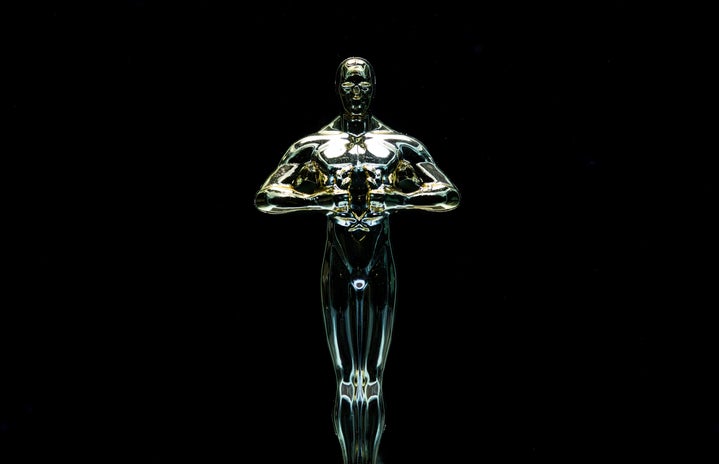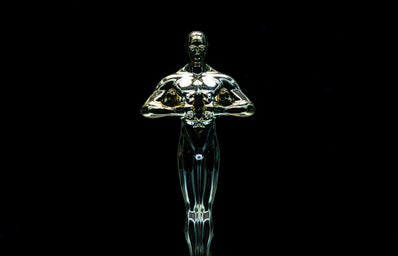Last week the Academy of Motion Picture Arts and Sciences announced new representation and inclusion standards for Oscars eligibility in the Best Picture category, designed to promote diversity both in front and behind the camera. The new rules are a part of the Academy of Motion Picture Arts and Science’s Academy Aperture 2025 initiative. The change may seem sudden and drastic, but in reality, the rules are only a part of a five-year journey to increase inclusion. The Academy has a history of failing to please the public’s thirst for on- and off-screen representation. As a result, many have strong opinions about the new rules and whether or not they will be effective. However, the rules are just one portion of the Academy’s long journey towards representation and inclusion. Therefore, before evaluating the new rules one must understand the history of representation.

The Academy’s push for diversity and inclusion started back in 2015 when the Oscars announced a set of 20 all-white acting nominees for the 87th Academy Awards. When Vulture asked Cheryl Boone Isaacs, the former president of the Academy of Motion Picture Arts and Sciences, whether the organization had a diversity problem, she replied, “Not at all. Not at all.” Isaacs has gone on record in 2020 to say that when she saw the nominations for that year, “her heart sank and it [the backlash and nominations themselves] said a lot not just about the academy but about America and where its bases of power are.” One could speculate whether Isaacs was caught off guard by Vulture’s question, speaking for the stakeholders of the Academy instead of her personal beliefs, or believed in her original statement. However, one thing is clear: the public believed that the members of the Academy were either promoting the myth of meritocracy and colorblindness, out of touch, irrelevant, or all of the above. To Issac’s credit, by the end of her leadership era she transformed the voting member body to give wins such as Parasite and Moonlight. However, collective outrage in 2015 sparked a hashtag heard around the world: #OscarsSoWhite.
Following the announcement, April Reign, a writer, editor, and former lawyer, tweeted, “#OscarsSoWhite they asked to touch my hair” and thus the movement was born. As the Huffington Post writes, “Within days, #OscarsSoWhite took on a life of its own. It flooded social media timelines, headlines, and stories for weeks.” Eventually, the 2015 film award season came and went, but after a second all-white group of actor nominations the following year, the rallying cry was stronger than ever.
The bad publicity both online and in the press prompted an emergency meeting at the Academy less than a week after the 88th Oscars nomination announcement. At the meeting, the Academy’s board of governors approved ambitious targets for an increase in diversity for membership because only Academy members can vote for the awards. The membership initiative was henceforth known as A2020 and it succeeded its goal to double the number of women and ethnically underrepresented members by 2020. The 89th Oscars–the night of the first Oscars during the A2020–had more than 20 people of color up for awards, including seven in acting categories. In 2018 the 90th Oscars became a little less “#sowhite” with nominees for Get Out and The Shape of Water. 2019 was the year where A2020 seemed to be paying off with numerous BIPOC nominations thanks to films like Roma, Black Panther, BlacKkKlansman, and If Beale Street Could Talk.
Change is Happening… But Not Fast Enough
Despite the wins in 2019 overall, the Academy is still dominantly made up of white males, with only 19% of its body being BIPOC and 33% female. This became apparent in 2020 where the 92nd Oscars nominations included just one actor of color. All nominees except for Bong Joon Ho’s Parasite featured overwhelmingly white casts. April Reign of Variety explains it by connecting the majority white male body to the nominations. She writes, “Since the majority of the Academy are white males the nominations are being viewed through their lens and experience. This may be why we are seeing the nominations that we are. I am not using words like racism or discrimination or bigotry; I am saying we all bring our own lens and our own experiences to our entertainment consumption.”
Furthermore, having a more diverse set of nominees won’t solve the systemic problems that exist in the industry. As Franklin Leonard (founder of The Black List, a platform to support and give unproduced screenplays a second chance) states perfectly, “you could have a year when literally every nominee is of color and that would still not mean that the systemic problems that exist in the industry have somehow evaporated overnight — any more than Obama becoming president means that we’ve solved the problem of racism.”
Still, there is an undeniable need for a more diverse Academy body and diverse nominees. As discussed in a previous article about the need for award shows, whether you like it or not award shows are not going away anytime soon. Therefore, as a short-term goal, it is crucial to support representation in the Academy because of the domino effect. An increase of minority representation in the voting body of the Academy translates to an increase in award-winning films that have representation on and off-screen. Studios will greenlight films for two main reasons: money and critical acclaim which in turn increases award potential. Winning an Academy Award meets both of those goals. For example, the 2020 Best Picture nominees still in theatres saw an average 68% increase at the box office after the nomination announcement.
At the end of the day, Hollywood is a business. A nomination for minority talent whether it be a director, actor, screenwriter, or other major categories boosts a studio’s reputation or increases their profits which in turn will make the studio greenlight more films with representation and hire BIPOC talent, whether it is on or off-screen. Award show wins and nominations boost careers and allow actors, directors, screenwriters or anyone part of the industry to have more influence behind the screen. With more influence, talent can advocate for more representation on and behind the screen.
Furthermore, a study by the USC Annenberg Foundation found that “recognition from peers and other industry members can provide a critical boost to a talent’s career. The public prominence that can result from a high-profile nomination can also create new role models for aspiring filmmakers and actors. Although award recognition comes at the end of a film’s production, the decisions made by notable organizations [such as the Academy of Motion Picture Arts and Sciences] offer insight into the mental models these groups hold about what it means to be successful, talented, or excellent.” In other words, future minority talent needs to see themselves win big awards because it shows their aspiring talent, that they can make it in the industry. Additionally, because the Academy is held in such high regard, if a BIPOC actor or director, screenwriter or person on- or off-camera wins an award, studios will see that BIPOC talent is worth investing in and consequently opens more doors for BIPOC talent.
Decrease in Viewership Spurs Change
As previously mentioned, Hollywood as a whole is a business, but the Academy of Motion Picture Arts is a business in itself. Even though it’s known for its public award shows, at the end of the day it is a private company responsible for making a profit. The Academy is a 501(c)(6) organization like the NFL. This means that, like other nonprofit organizations, it is exempt from federal income tax and is a private nonprofit organization. However, unlike traditional nonprofits (501(c)(3)s get funded through tax-deductible contributions and grants), 501(c)(6)s rely on themselves to make money to function.
According to the Academy of Motion Picture Arts and Sciences’ annual report, selling commercial space to advertisers during the Oscars provides the largest part of the Academy’s revenue. In other words, the Academy of Motion Picture Arts and Sciences’ existence depends on Oscars viewership.
There are many reasons people have given to explain why Oscars viewership has decreased. Many often attribute the rating decrease to the increasing politicization of the Oscars. In recent years after winners thank the Academy, their family, and the people who worked on the film or made their win possible, actors have used their precious seconds on stage to remind the audience in the room and at home of their political beliefs or personal values. There is a sliding scale of political “intensity.” Actors have said subtler messages like, “we should save the planet,” and, “representation matters,” to a more dividing stance such as cursing out the president. Nevertheless, the majority of beliefs stated are liberal-leaning by the public’s standards.
While it is important to acknowledge that the entertainment industry, especially those nominated for Oscars, is a very small circle which shares more liberal beliefs, the increase of political expression reflects a bigger trend. In the past four years across the world, many countries’ politics, such as in the US, have become more polarizing and extreme. In other words, the political pendulum swings have become longer and more intense. Consequently, everyone–not only celebrities–is talking about politics.
Therefore, it is difficult to say that people are no longer watching the Oscars simply because of political award speeches. Perhaps it accounts for some loss of viewership. However, based on Inscape (a TV measurement company) and CivicScience data, the main demographic has tended to be more liberal-leaning. After all, the majority of people willing to watch a three-hour award show from start to finish celebrating the previous year’s accomplishments in film are often film enthusiasts who support the arts industry. It is important to realize that there is no strong correlation between film enthusiasts and liberals. However, supporting the arts industry (especially indie films as opposed to blockbuster films which the Oscars ignore) is typically associated with more liberal political leaning. The Democratic National Party specifically states in their party platform document that they support funding the arts and believe in its importance to the well-being of society. On the other hand, the Republican Party platform document never specifically addresses the arts industry instead advocating for reining in out-of-control spending, balancing the budget, and ensuring sound monetary policy.
Another reason why politics is not the cause of the viewership decline is because the majority of the public does not watch the nominated films. The type of films the Oscars have nominated hasn’t changed, the public simply has other entertainment options from streaming services, movie quality TV shows, YouTube, and tentpole franchise movies. As Reason writer Nick Gillespie perfectly sums up, “The general award show viewership loss not just the Oscars loss has nothing to do with political posturing—conservatives, progressives, liberals, and libertarians all have infinitely more outlets than we did a generation ago—and more to do with incredible consumer choice.” In fact, both liberal and conservative film critics agree on the real problem: an increasingly fractured audience, one split apart by an ever-growing glut of viewing and entertainment options. Ross Douthat, the New York Times’ “resident conservative writer” points out that the actual line up of Best Picture nominees don’t look any different from decades past. Douthat cites that “Lady Bird” is a lovely mother-daughter movie and may God send many more female-centric movies like it — but 35 years ago a little mother-daughter movie called “Terms of Endearment” won Best Picture and made the equivalent of $300 million, numbers that only superhero movies tend to hit today.” Sam Adams of Slate agrees, stating, “Oscars used to go to more popular movies, but what’s changed isn’t the kinds of movies the Academy nominates so much as the movies people are going to see.” In other words, Oscar nominees really haven’t changed so much; What has, is that audiences don’t go see “Oscar” movies anymore.
Furthermore, Oscars viewership has been down for the past ten years. The highest viewership in the past decade and a half was in 2005 with 42.14 million. In 2006 viewership dropped to 38.9 million, and the Oscars have only had over 40 million viewers five times in the last 15 years. The increase in political themes may have accelerated the decline in viewership, the ratings have been on a downward trend since 2013. While award-show fatigue and the fact that the nominated films aren’t relatable to the general public (something a new, diverse voting membership board can help with) are speculated reasons, one reason may have some evidence to back it up: the lack of representation.
The lack of representation is going to cost the Oscars. In 2015, when analyzing a breakdown of demographics of Oscars viewership over the past 10 years, writer Ashley Black for attn: found that whether or not Black viewers have tuned in has made the difference in whether or not the Oscars get over 40 million viewers. This is because the other racial groups (as defined by the trades) tend to watch broadcasts consistently every year. In 2005, Chris Rock hosted, four Black actors received nominations, and Ray was up for the Best Picture. The next year, only one Black person received a nomination and the audience dropped to 38.9 million. Black viewers accounted for 60% of that decline.
A similar inquiry done by The New York Times in 2015 found that in 2010, Oscars ratings were about 41.7 million viewers. In 2010, Precious was among the best picture nominees and Mo’Nique, Gabourey Sidibe, and Morgan Freeman received nominations. The following year there were no Black acting nominees. 2011 viewership fell to 38.2 million and more than half of the year to year decline resulted from a smaller Black audience, according to Nielsen categories.
An updated study published in 2017 by The Daily Beast corroborated the hypothesis that a lack of inclusion and diversity historically dooms Oscars’ ratings. Using Nielsen rating data from 2004 to 2016 that broke Oscars viewership down by race, writer Kevin Fallon found out three major findings. First, the largest percentage of Black viewers and non-white (e.g. Hispanic and Asian) viewers tuned in to the Academy Awards in years when the most nominees of color and film featuring protagonists of color were in contention. Second, the years with the least diversity were the least-watched among people of color. Third, years with the highest percentages of Black and non-white viewers also happened to be the highest rated Oscars. In other words, BIPOC viewers reliably spiked in years with the most nominees of color. Viewers of color have been and are a major driving force in Oscars ratings.
Whether or not there is a true link between diversity and viewership, the Board of Governors took notice. Noting #OscarsSoWhite is still a problem within the Academy and efforts to diversify the voting body ultimately failed, the Academy had an idea to change the film industry instead of the organization itself this time. My next article will break down the standards and evaluate them to see if they could make a difference.


